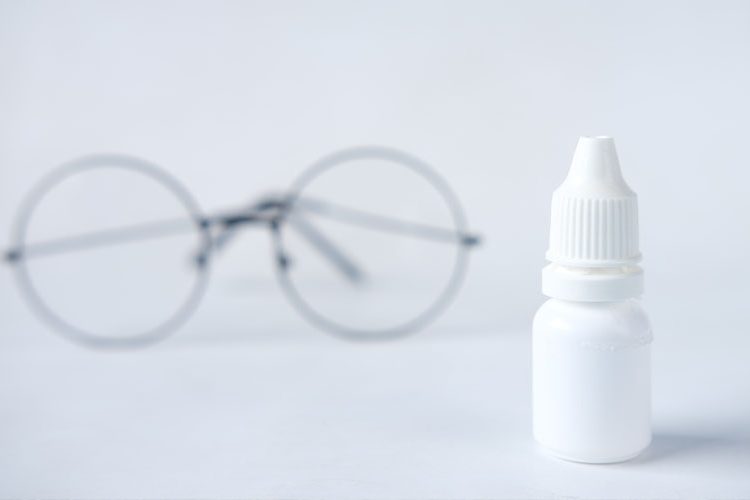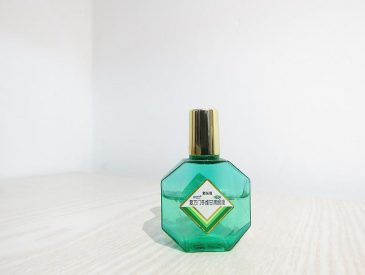Never use eye drops that have expired. This is because over time, they may lose their effectiveness or become contaminated. Eye drops that have been opened are more likely to get sick. Therefore, they should only be used for the period of time that the manufacturer has specified.
Utilize your eye drops with clean hands and avoid touching the dropper tip to any surfaces to prevent contamination. If you’re unsure whether to use an eye drop bottle due to its expiration date or the fact that it has been opened, consult your healthcare provider.
What you need to know about eye drops and their expiration dates is provided below.
Table of Contents
Why Do Eye Drops Expire?
The ingredients will have an impact on the expiration date for each type of eye drop.
In Clear Eyes Redness Relief eye drops, for example, the active chemical ingredients of glycerin (the lubricant) and naphazoline hydrochloride (the redness reliever) eventually break down, meaning they’ll be less effective and safe.
These substances might deteriorate and transform into potentially dangerous substances with time.
In order to extend their shelf lives and prevent microbial contamination, many eye drops also contain preservatives. Most eye drops with preservatives will have an expiration date of at least one year after manufacturing, according to the The AAO (American Academy of Ophthalmology).
Use of these eye drops past their expiration date is typically safe and effective. The AAO advises that even if the eye drops are still within their expiration date, you should discard them three months after opening them because they may have a much shorter shelf life.
That’s because after opening eye drops, the exposure to oxygen can accelerate the degradation of chemical ingredients and cause the solution to weaken.
Eye drops without preservatives, which are typically sold in single-use vials, should be discarded 24 hours after being opened. These are typically intended for single use.
Is It Safe to Use Expired Eye Drops? The Risks
The eye drops’ expiration date indicates when they are no longer guaranteed to be sterile or effective.
It can be dangerous to use eye drops that have expired. For instance, the drug might not function as it should. Having a serious condition, such as an eye infection, can make this problematic.
Additionally, contaminated drops have the potential to contaminate your eye. This might also happen if the bottle tip has picked up contaminants from contacting other surfaces. For bottles that have been opened for a long time, contamination is more likely. Using contaminated drops can result in eye infections, including serious ones.
For these reasons, it’s crucial to only use eye drops that are still within their expiration date. If you’re not sure whether to use expired drops, consult a pharmacist or healthcare professional first. They can assist you in determining whether it is secure to employ them.
This recommendation can seem frustrating, especially since eye drop medications can be costly. The safer option is to stay away from eye drops that are past their expiration date.
Read about How To Put In Eye Drops In The Proper Step-By-Step Way?
What Happens to Eye Drops After You Open Them?
An eye drop’s active ingredient (or active ingredients) may begin to degrade once the bottle is opened. Additionally, germs can be introduced into the bottle. This is because opening the bottle breaks the sterile seal. The drops are kept safe from contamination by the sterile seal. The best course of action is to avoid opening new bottles of eye drops until you actually need to use them.
The majority of eye drops contain preservatives, which lessen the likelihood of infection by preventing bacterial growth. Typically, these are multipurpose eye drop bottles. One-time use vials without preservatives are another option for eye drops. Over a 24-hour period following opening, these single-use vials shouldn’t be used.

How Long Can I Use Eye Drops After Opening Them?
Many manufacturers recommend that you throw away eye drops 28 days after opening the bottle. This is because internal preservatives may begin to degrade and promote the growth of bacteria.
How long a medication eye drop can be used after opening varies depending on the medication. In general, you should anticipate that the eye drops will remain stable long enough for your treatment to be completed.
For example, if you’re using an antibiotic eye drop like ofloxacin (Ocuflox), the course of treatment typically lasts 14 days or less. The bottle should therefore remain stable for at least 14 days.
The eye drop latanoprost (Xalatan) is used to treat glaucoma or ocular hypertension. When you get a refill of latanoprost drops, you might find that you use the entire bottle. The manufacturer states that they’re stable for up to 6 weeks.
Lifitegrast (A single-use container eye drop is an example of Xiidra). Each container has enough medication for a single dose in each eye and should be thrown away immediately after use.
It is best to refrain from using eye drops if you are unsure of how long a bottle has been open. If it’s a prescription eye drop, you might also want to call your pharmacy. When your prescription was picked up, they can tell you. For additional advice, you can also speak with your healthcare provider.
How Long Can I Use Prescription Eye Drops?
If used and stored properly, eye drops should remain safe and effective until the expiration date, unless your eye doctor specifies otherwise or it is noted on your prescription. If the bottle’s sterile seal is broken, you should be aware that it might become contaminated, especially if the bottle’s tip makes contact with your eye or another surface. Many eye drops have preservatives in them to slow the growth of bacteria in the product; these preservatives should stop contamination up until the eye drops’ expiration date.
Different eye drops have different expiration dates and should be thrown away after a certain period of time. Individual vials of preservative-free eye drops have a much higher risk of contamination because there is no additional barrier against bacterial growth. 24 hours after opening, these eye drops should be discarded.
Even though some other eye drops contain preservatives, once they are opened, they lose their effectiveness much more quickly. The length of time a medication is supposed to be effective and free of contamination is indicated by its expiration date. Before opening the bottle, make sure the expiration date is clearly marked and that you have carefully read the directions for using these types of eye drops. Ask your eye doctor for more information if you’re ever unclear about how long you can use your eye drops.
It’s crucial to follow the instructions on the bottle or package when using eye drops and to store them properly. Some drops should be kept at room temperature, while others may require refrigeration. Once the bottle has been opened, the storage instructions may change. If the drops are not stored properly, they might no longer be useful or safe to use, and they will need to be thrown away.
What to Do If You’ve Used Expired Eye Drops by Mistake?
You should inform your healthcare provider if you unintentionally use expired eye drops. Make sure to keep a close eye on your symptoms. You might need to see a doctor if you experience any unwelcome side effects, such as itchiness or pain.
In most cases, accidentally using expired eye drops won’t have any negative consequences. But it’s best to exercise caution at all times. If this happens, ask your doctor to assist you in keeping an eye on your health.
How to Keep My Eye Drops from Becoming Contaminated?
You can help keep eye drops from becoming contaminated once the bottle is open by correctly administering the eye drops.
Key points to avoid contamination include:
- Washing your hands before and after using the eye drops
- Avoid touching the dropper tip of the bottle to your eye, hands, or anything else
- Replace the bottle’s cap right after use
Keep your eye drops at the recommended temperature and in a dry place. The best place to store some eye drops is at room temperature. While some should be kept chilled.
Your eye drops should have this information on the label or package insert. Storage and administration guidelines ought to be provided. Ask your pharmacist for advice if you’re unsure of how to use or store your eye drops.
Read about Can You Use Contact Solution As Eye Drops?
Follow Your Optometrist’s Instructions
As long as your eye drops aren’t expired and you’ve complied with your eye doctor’s instructions, you should be able to use them without any problems. You might need to adhere to particular storage and usage guidelines depending on the type of eye drops you have. While some drops must be kept cold and stored in a refrigerator or cooler, others must be kept at room temperature.
If you have artificial tears for moisture, you may have preservative or preservative-free eye drops. Use caution when using eye drops devoid of preservatives because they lack additives that help fight bacteria. Usually, these eye drops need to be thrown away 24 hours after being opened.
When used properly and sterile, eye drops rarely cause issues. The dropper of your eye drops should never touch any surfaces, and you should always check the expiration date. Infected eyes may result from using contaminated eyedrops.
Using Your Eye Drops Safely
Eye drops have a wide range of uses and advantages, but you must use them responsibly. They could become contaminated by bacteria, which could result in eye infections. You must use eye drops safely, regardless of the type you have.
Follow these tips when using your eye drops to help prevent possible complications:
- Check the expiration date of your eye drops
- Wash your hands before & after using your eye drops
- Ensure the dropper is clean & doesn’t touch your eyes, eyelids, or another surface
- Replace your dropper if it touches the ground or another area—this contaminates the dropper
- Wait at least 5 minutes between types of eye drops if you have to use 2 or more
Give your child’s eye drops yourself if you have a young child to ensure that they use them safely.
Avoid Things for Using Eye Drops
Avoiding potential issues, such as sharing eyedrops and using them while wearing contact lenses, is another way to use your eyedrops safely.
Giving someone your eye drops to hydrate their eyes may seem like a nice gesture, but doing so puts them at risk for infection. When you use your eye drops, your eyes may become irritated because someone contaminated the dropper. Keep your eye drops to yourself and yourself only because nobody wants an infection.
Using eye drops while wearing contact lenses is also not advised. However, if your eye doctor thinks it’s safe, you can use them. Ask your optometrist for instructions on how to use your eye drops; they might have specific guidelines that you should adhere to.
The Bottom Line
Expired eye drops could be contaminated or less effective than expected. So, using them is never advised. The same rule applies to eye drop bottles that have already been opened as well. After the expiration date, the safety and efficacy are unknown.
The likelihood of bacteria contamination increases when eye drop bottles are left open. Multiple dose bottles have preservatives to help guard against contamination. How long an eye drop bottle can be left open should be specified on the manufacturer’s label.
Utilizing eye drops that are out-of-date or tainted occasionally can result in eye infections or irritation. By handling the drops with clean hands and avoiding touching any surfaces with the dropper tip, you can help prevent contamination.
If you’re unsure whether it’s safe to use a bottle of eye drops, speak with your doctor.





